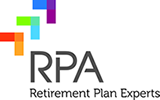Congress added the new catch-up contribution limits to retirement plans out of concern that aging employees had not been saving enough for retirement. These new limits enable savers age 50 and over (as of the last day of the plan year) to increase contributions as retirement draws near. Age-50 catch-up contributions are possible in 401(k), 403(b) and 457 plans, and IRAs, with the rules differing among plans. The provision focus on the 401(k) rules.
First, prior to deciding to make catch up contributions, understand that you can only make an age-50 catch-up contribution if your plan permits them. Your plan’s Summary Plan Description will tell you if your company has elected to accept catch up contributions.
How They Work
The limit works as follows, assuming your plan permits these contributions and you are age 50 or older in 2010: You may make an additional $6,000 pretax contribution to your 401(k) plan, on top of your regular pretax contribution limit.
| Federal 401(k), 403(b) and 457 Plan Contribution Limits (Your Plan’s Limits May Differ; Check with Your Employer) |
||
|---|---|---|
|
Year |
Regular pretax dollar limit | Catch-up Contribution |
| 2011 | $16,500 | $5,500 |
| 2012 | $17,000 | $5,500 |
| 2013 | $17,500 | $5,500 |
| 2014 | $17,500 | $5,500 |
| 2015 | $18,000 | $6,000 |
(If you have an IRA, keep in mind that the permitted IRA catch-up contributions are lower:
$500 a year through 2006, when they rise to $1,000.)
The best feature about the catch-up limit is that it is not subject to any other federal or plan contribution limits. Catch-ups contributions are made in addition to your current deferral limits. After you contribute the full $18,000 allowed in 2015, you may make an additional $6,000 contribution, for a total of $24,000.
If your plan has restrictions that prevent you from contributing the full $18,000, such as capping contributions at 15% of pay, you can still contribute the $6,000 on top of your other limit. This provision is applicable even if your contributions are capped because you are considered a highly compensated employee (HCE). As an added bonus, the IRS is willing to let employers classify excess 401(k) contributions (up to $6,000) as catch-up contributions. So, if you are an HCE who is 50 or older, and your plan allows catch-up contributions, you should be able to contribute $6,000 over your HCE limit in 2015 without being required to take a refund.
All 401(k) contributions must be made through payroll deduction, including your catch up contributions. If you want to make a $6,000 contribution from a single paycheck, such as a bonus check, make sure you can afford this reduction in your salary for the applicable pay period.
Availability Issues
You cannot take advantage of the catch-up contribution unless your employer amends its plan document to allow them. While many employers did this at beginning of the year, others may not plan to offer catch-up contributions immediately. Participants wanting to make catch-up contributions should make their employer aware of this desire. Knowing that employees are interested might be the incentive the employer needs to get the plan updated.
If you are unsure when your plan may offer catch-up contributions, check with your benefits department.
Maximize Your Catch Up Contributions
Understanding how to maximize catch-up contributions is fairly straightforward. A lot depends on whether your employer makes a matching contribution. If it matches your regular contributions, it is not required to match your catch-up contribution, but it is allowed to. Your Summary Plan Description would provided details concerning matching elections.
If your employer doesn’t provide any matching contribution at all, or if your employer matches both the regular and catch-up contributions, make your full contribution, then you make your catch up contributions.

